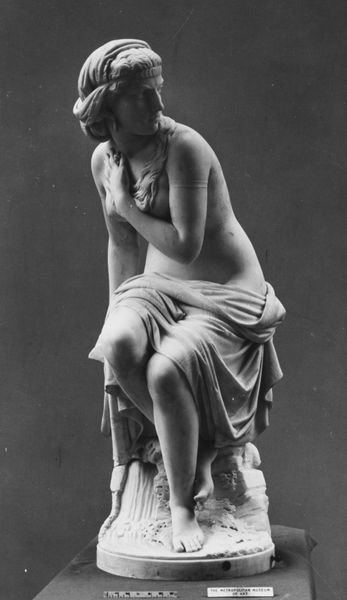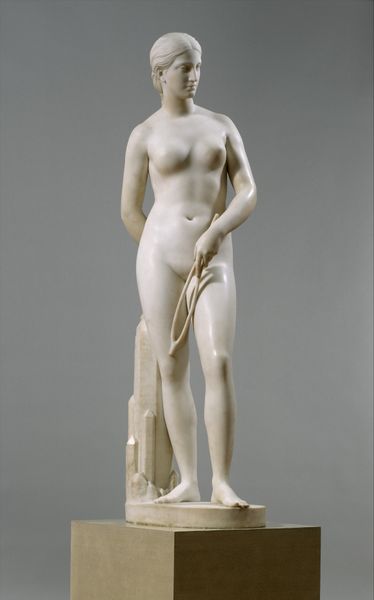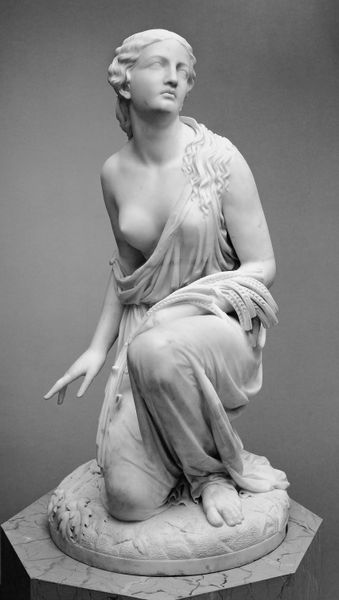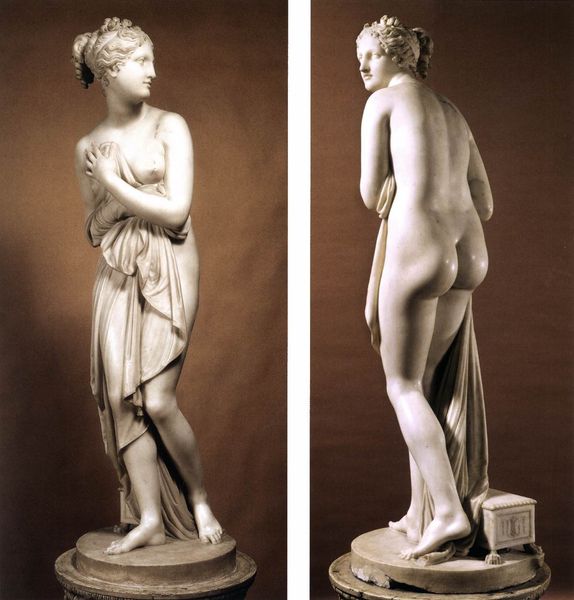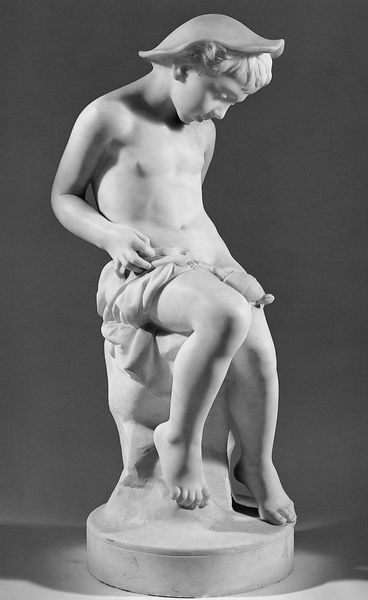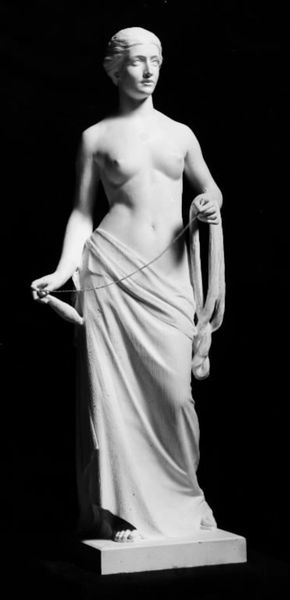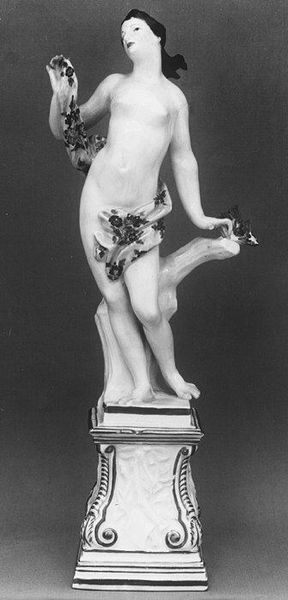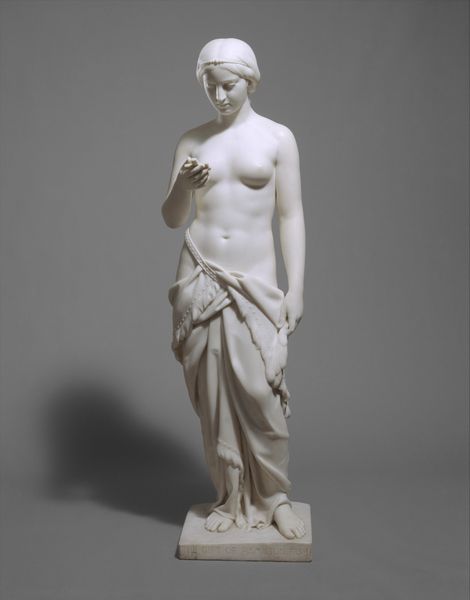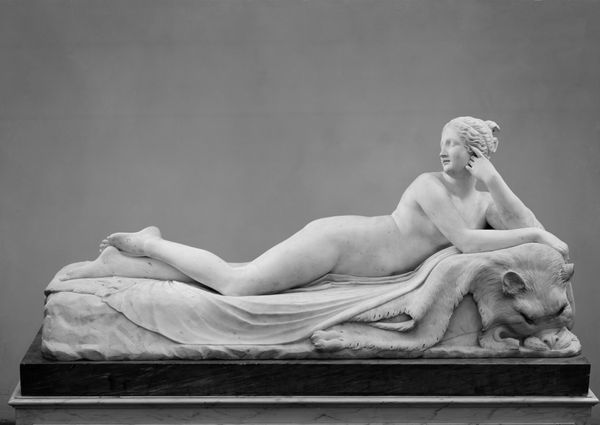
Dimensions: Height: 36 1/4 in. (92.1 cm); Base: 6 in. (15.2 cm)
Copyright: Public Domain
Editor: Standing before us is an 18th-century marble sculpture entitled "Venus" by Claude Desbatisse. The smooth, cool stone gives it a really timeless feel, almost detached. What are your initial thoughts about its place within art history? Curator: This Venus embodies Neoclassical ideals, a deliberate return to the aesthetics and values of ancient Greece and Rome. How do you see the politics of imagery at play here, considering Venus’s traditional association with beauty and power? Editor: Well, I see the male gaze right away. She's posed to be admired. Is that tied to the period somehow? Curator: Precisely. Neoclassicism emerged in a period of social and political upheaval – the Enlightenment and the French Revolution. The appropriation of classical forms was also a way for the elite to reinforce their status and project an image of order and stability. This Venus isn't just a depiction of beauty; it’s a statement about power, taste, and social values of that time. Who controlled access to images like these and what message does it send about the ideal feminine? Editor: So it’s about much more than just the aesthetic appeal; it’s about social control and cultural messaging through art. It really changes how you look at a seemingly "simple" sculpture. Curator: Exactly. And understanding this historical context, lets us understand art’s role in society, revealing the complex interplay between art, power, and ideology. Editor: I learned so much - so grateful. Thanks!
Comments
No comments
Be the first to comment and join the conversation on the ultimate creative platform.
